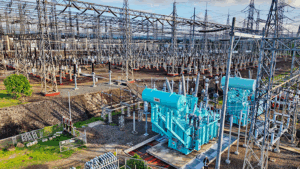THE damage done by the US 19% reciprocal tariff on Philippine goods is considered less significant than the potential impact of a special tariff on semiconductors, credit agencies and research houses said.
“Details of upcoming sectoral tariffs on semiconductors will nonetheless be important for Philippine exports given the country’s focus on lower value-added testing and assembly activity,” MUFG Global Markets Research said in a Sept. 1 note.
MUFG said the 19% tariff on Philippine goods is unlikely to have a significant impact on the economy as it shares a similar rate with its Southeast Asian neighbors.
“The US tariffs on the Philippines at 19% were of course not the most ideal, but we have highlighted that the net impact to the Philippine economy is unlikely to be that large given most of the other countries and export competitors are getting relatively similar rates, and also due to the more domestic oriented nature of the Philippine economy,” it said.
Moody’s Ratings said Southeast Asia could nevertheless expect a boost in semiconductor export volumes amid higher demand due to artificial intelligence and high-performance computing and 5G technology.
However, sectoral tariffs could make the region’s exports less attractive to the US, it added.
“Semiconductors now represent a significant engine of export and manufacturing growth within the region, accounting for around 26% of Malaysia’s and 32% of the Philippines’ (Baa2 stable) total goods exports in 2024,” Moody’s said in a separate report.
US President Donald J. Trump has said he plans to impose higher tariffs on semiconductors, except for companies that plan to build manufacturing facilities in the US. However, no rates have been set.
Trade Undersecretary Allan B. Gepty said semiconductors and electronics make up around 53% of Philippine exports to the US. Most of the semiconductors are manufactured by US companies in the Philippines and exported.
The Philippine Statistics Authority reported that exports grew 13.2% in the first half to $41.24 billion. Of the total, the US accounted for 16%, or $6.598 billion.
On the other hand, the manufacturing sector turned in a subdued performance in August, with the Manufacturing Purchasing Managers’ Index receding to 50.8 from 50.9 in July, S&P Global said.
This was marked by a muted rise in output and new orders following the implementation of the US tariffs. — Katherine K. Chan

















